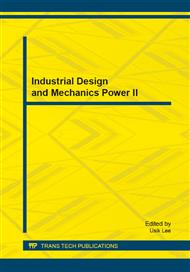p.217
p.222
p.226
p.231
p.236
p.241
p.245
p.249
p.253
Analysis of Transmission Performance of Helical Gear Based on High-Order Modification Design
Abstract:
Flank modification is widely used in helical gear to diminish contact stress and edge contact, to improve the transmission performance. In this paper, tooth contact analysis is used to simulate the modified helical gear driver with high-order parabolic modification curve. The results show that the transmission error is diminished, and the meshing area is non-sensitive to the alignment errors.
Info:
Periodical:
Pages:
236-240
Citation:
Online since:
October 2013
Authors:
Price:
Сopyright:
© 2013 Trans Tech Publications Ltd. All Rights Reserved
Share:
Citation:


